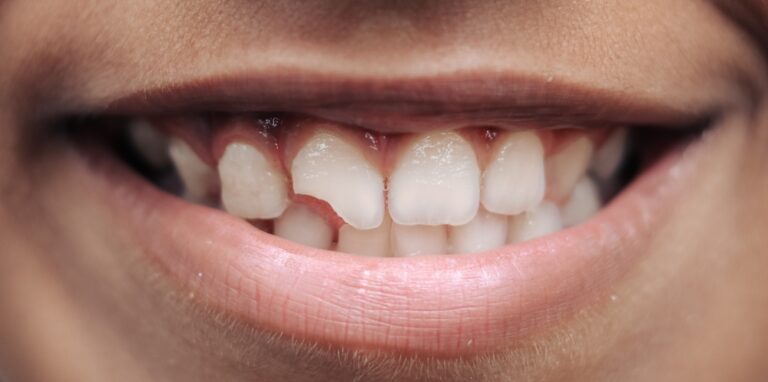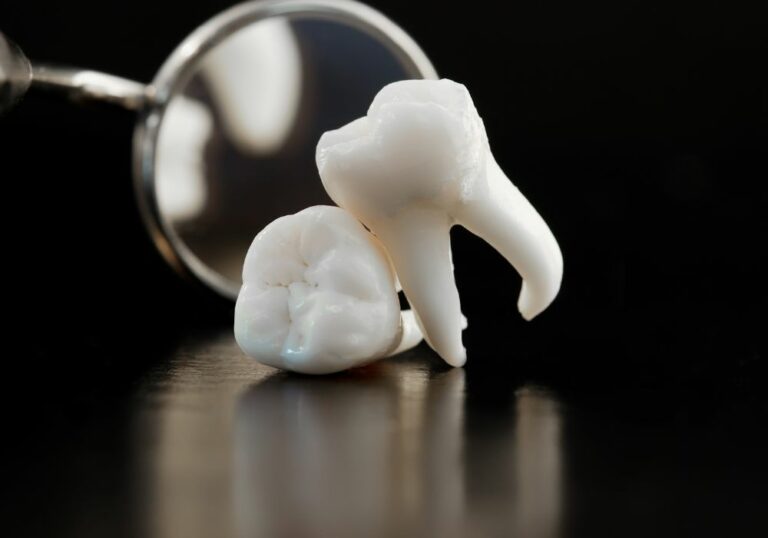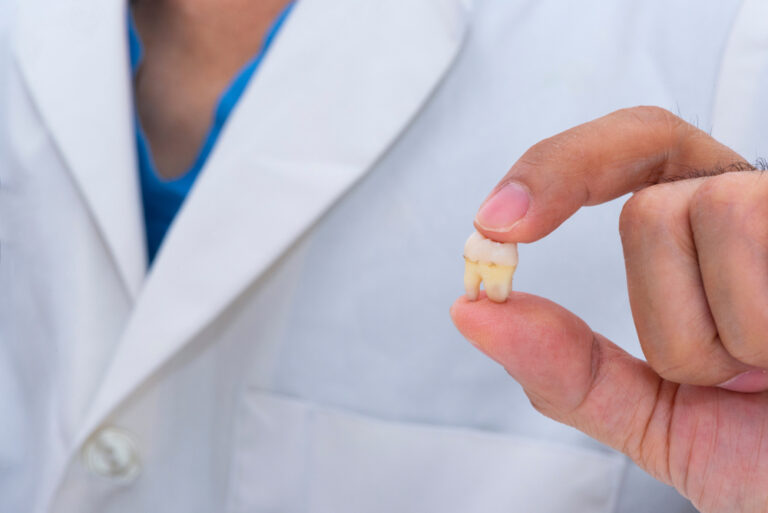Wisdom teeth, also known as third molars, are the final set of molars to erupt in the very back of the mouth typically between the ages of 17 and 25. Wisdom teeth often cause problems as they try to emerge due to insufficient space, incorrect positioning, or impaction. One common complication is pericoronitis, which is an infection of the gum tissue surrounding the wisdom tooth. This raises the question – is it possible for an infected wisdom tooth to heal on its own without requiring extraction?
The Anatomy of Wisdom Teeth
In order to understand wisdom tooth infections, it helps to first understand their anatomy and formation. Wisdom teeth originate from tooth buds buried in the back of the jawbone. As they develop, they move upward and gradually emerge through the gums, sometimes only partially. The tissue that covers and surrounds erupting wisdom teeth is called the operculum.
In normal erupted wisdom teeth, the operculum has receded to expose the entire tooth crown above the gumline. But in partially impacted wisdom teeth, the operculum remains like a “flap” of tissue over the erupting tooth. This flap can become irritated and infected.
How Pericoronitis Develops?
Pericoronitis refers to infection and inflammation of the gum tissue flap (operculum) overlying a partially erupted wisdom tooth. It develops for several reasons:
- Trapped debris – Food and plaque trapped under the flap cause chronic irritation.
- Bacterial infection – Bacteria multiply rapidly in the warm, moist environment under the flap.
- Obstructed eruption – Partial impaction prevents drainage and promotes infection.
- Difficult cleaning – Brushing and flossing cannot reach under the flap to remove bacteria.
The trapped debris and bacteria trigger release of inflammatory chemicals. This leads to characteristic symptoms of pericoronitis like swelling, pain, and redness around the wisdom tooth.
Stages of a Developing Wisdom Tooth Infection
Wisdom tooth infections are often acute and rapid in onset. However, they can also develop more gradually through several stages:
Early infection
Initially, the operculum becomes mildly inflamed due to chronic irritation. Slight reddening of the tissue and mild discomfort may be present.
Acute inflammation
Untreated irritation advances to acute inflammation marked by more intense reddening, edema (swelling), and throbbing pain in the gums around the tooth.
Abscess formation
A localized abscess eventually forms as pus collects in the tissues surrounding the wisdom tooth. The area becomes very swollen, painful, and purulent.
Late complications
An untreated infection can spread to adjacent areas like the jawbone and floor of the mouth. Severe swelling, high fever, and difficulty swallowing or opening the mouth occur once the infection disseminates.
Signs and Symptoms of Pericoronitis

The hallmark signs and symptoms of an infected operculum surrounding a wisdom tooth include:
- Swelling, redness, and tenderness over the erupting tooth
- Pain or throbbing sensation in the jaw
- Sensitivity to hot and cold temperatures
- Pus or foul-tasting drainage from the gums
- Lymph node enlargement and tenderness
- Fever in moderate to severe cases
- Difficulty opening the mouth or chewing
- Bad breath
These symptoms may start suddenly or worsen gradually over days. Most cases of pericoronitis are exceedingly painful due to the rich nerve supply to the gums.
Risk Factors for Wisdom Tooth Infections
Certain people have increased likelihood of developing pericoronitis when wisdom teeth try to erupt, including:
- Poor oral hygiene
- History of prior pericoronitis
- Periodontal (gum) disease
- Smoking or tobacco use
- Immunocompromised state
- Chronic illnesses like diabetes
- Use of certain medications like steroids
Lack of space for wisdom teeth to erupt properly also raises risk of impaction and secondary infection.
Can Pericoronitis Resolve Without Treatment?
It is possible in some cases for an early, mild wisdom tooth infection to resolve spontaneously. However, most moderate to advanced infections will not clear up on their own without management.
Several factors must align for a pericoronitis infection to clear without treatment:
- Wisdom tooth is partially erupted
- No signs of abscess formation
- Very minor localized swelling
- Healthy immune response
- Early phase detected rapidly
- Good oral hygiene is maintained
With diligent at-home care and monitoring, some early cases have been shown to resolve temporarily without antibiotics or extraction. But more commonly, wisdom tooth infections persist or quickly worsen once established.
Why Extraction is Often Necessary

While a select few early infections may briefly respond to conservative measures, most cases ultimately require extraction. This is because extraction is the only way to fully remove the source of infection and inflammation – the partially erupted wisdom tooth:
- Eliminates ischemia and compression – Extracting the wisdom tooth relieves compression on surrounding soft tissues and improves blood flow to accelerate healing.
- Allows drainage – Removing the tooth provides an avenue for pus and debris to drain from the tissues and sockets.
- Removes bacteria – Taking out the wisdom tooth eliminates the colonies of bacteria festering under the operculum.
- Prevents recurrence – Partially erupted wisdom teeth left in place tend to become repeatedly infected over time.
Signs of Improvement After Extraction
Once an infected wisdom tooth is extracted, patients often experience significant relief within 1-2 days. The initial discomfort and inflammation peaks in the first 24-48 hours as the body begins healing. Signs the infection is resolving include:
- Decreased swelling and pain by days 3-5
- Improved ability to open the mouth and chew
- Resolution of bad breath and foul taste
- No more pus draining from the extraction site
- Reduced lymph node swelling within 1 week
Most post-operative symptoms resolve within 7-10 days after wisdom tooth removal. Healing is complete around 6 weeks.
Preventing Future Pericoronitis Infections

Because partially impacted wisdom teeth so frequently become infected, prevention focuses on:
- Regular dental exams to evaluate for early signs of infection
- Preemptive extraction of partially erupted wisdom teeth in young adults
- Meticulous oral hygiene with brushing, flossing, and antiseptic rinses
- Good general health and immunity to help resist infection
- Avoiding smoking and tobacco use
Ideally wisdom teeth should be removed before age 25 if they are partially erupted or unlikely to fully emerge properly. This prevents most future occurrences of painful and serious wisdom tooth infections.
Conclusion
While some early and mild cases of pericoronitis may temporarily resolve with conservative treatment, most moderate or severe infections around an impacted wisdom tooth will require extraction. Removing the wisdom tooth eliminates the sources of compression, bacteria, and inflammation to allow definitive healing. This also prevents chronic or recurrent infections in the future. Relying on antibiotics and dental hygiene alone often fails to produce lasting relief from wisdom tooth infections. Extraction is the most effective approach in the majority of cases.
Expanded FAQ
Q: What causes pericoronitis?
A: Pericoronitis is most often caused by a combination of trapped food debris, plaque buildup, and bacterial overgrowth under the gum tissue flap covering a partially emerged wisdom tooth. This leads to infection and swelling of the flap, known as the operculum.
Q: How do you treat an infected wisdom tooth at home?
A: At home care for wisdom tooth infections involves salt water rinses, over-the-counter pain medicine, warm compresses, and maintaining good oral hygiene. See a dentist as soon as possible for antibiotic therapy and potential extraction. Never attempt extraction on your own.
Q: Can a wisdom tooth infection spread?
A: Yes, a wisdom tooth infection can spread to adjacent areas in the mouth and jaw, sometimes becoming life-threatening. Any infection left untreated may disseminate. Seek prompt medical attention if you have difficulty swallowing, opening your mouth, or have a high fever.
Q: How do you know if your wisdom tooth infection is healing?
A: Signs a wisdom tooth infection is resolving include decreased pain, swelling, and redness, improved mouth opening, no more pus discharge, reduced lymph node swelling, and ability to chew normally. However, only removing the wisdom tooth can prevent recurrence.
Q: Why do wisdom teeth flare up years later?
A: Partially impacted wisdom teeth often flare up repeatedly with infections like pericoronitis. This occurs because the partially erupted tooth allows bacteria to harbor and provides an avenue for reinfection. Removing the wisdom tooth is the only way to prevent this cycle.
Q: Can a dentist refuse to remove an infected wisdom tooth?
A: If the infection is severe, a dentist may recommend delaying extraction until the infection is brought under control with antibiotics. No ethical dentist would refuse to treat an infected wisdom tooth causing symptoms. But they may refer out if it requires an oral surgeon.







